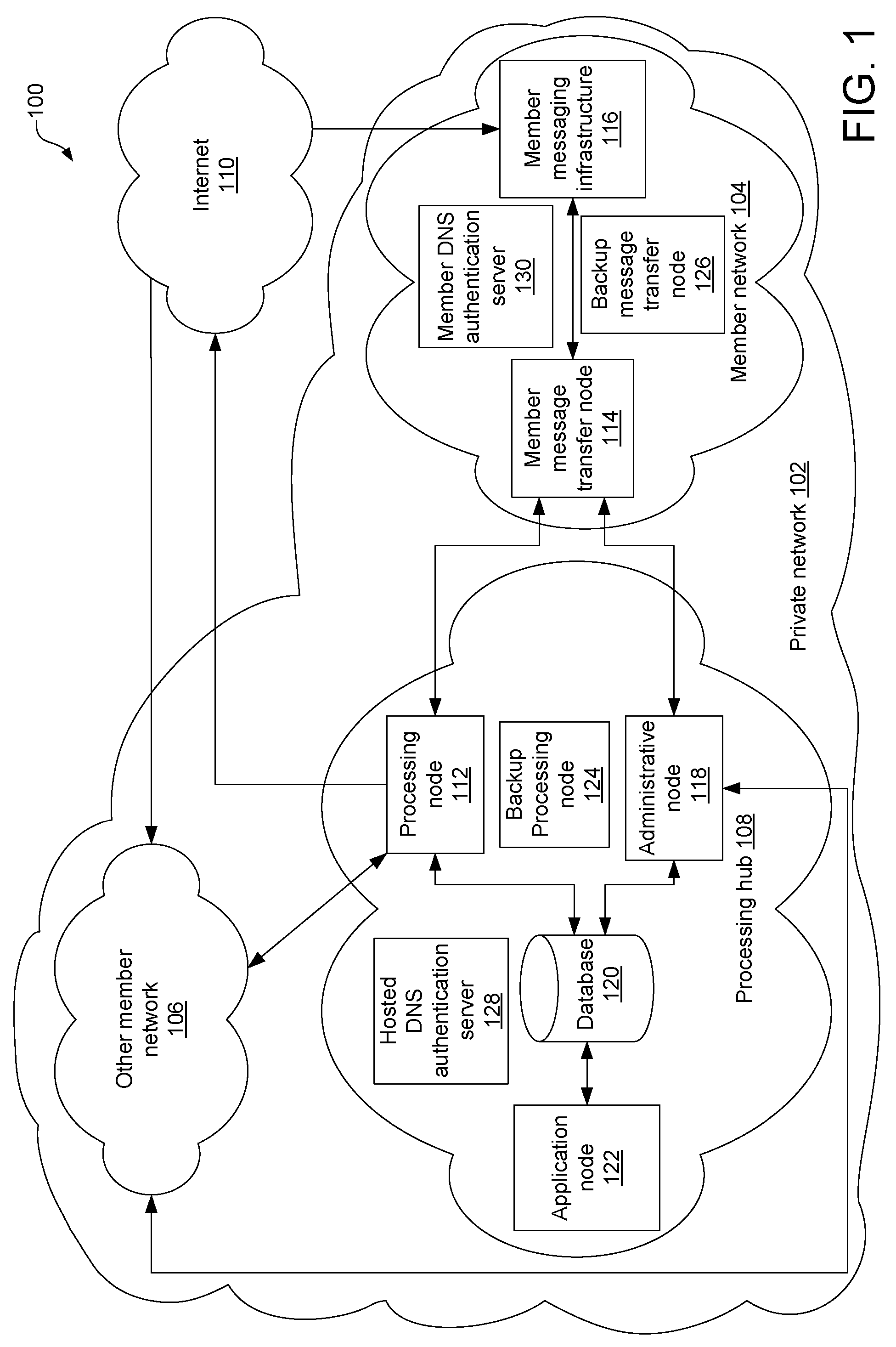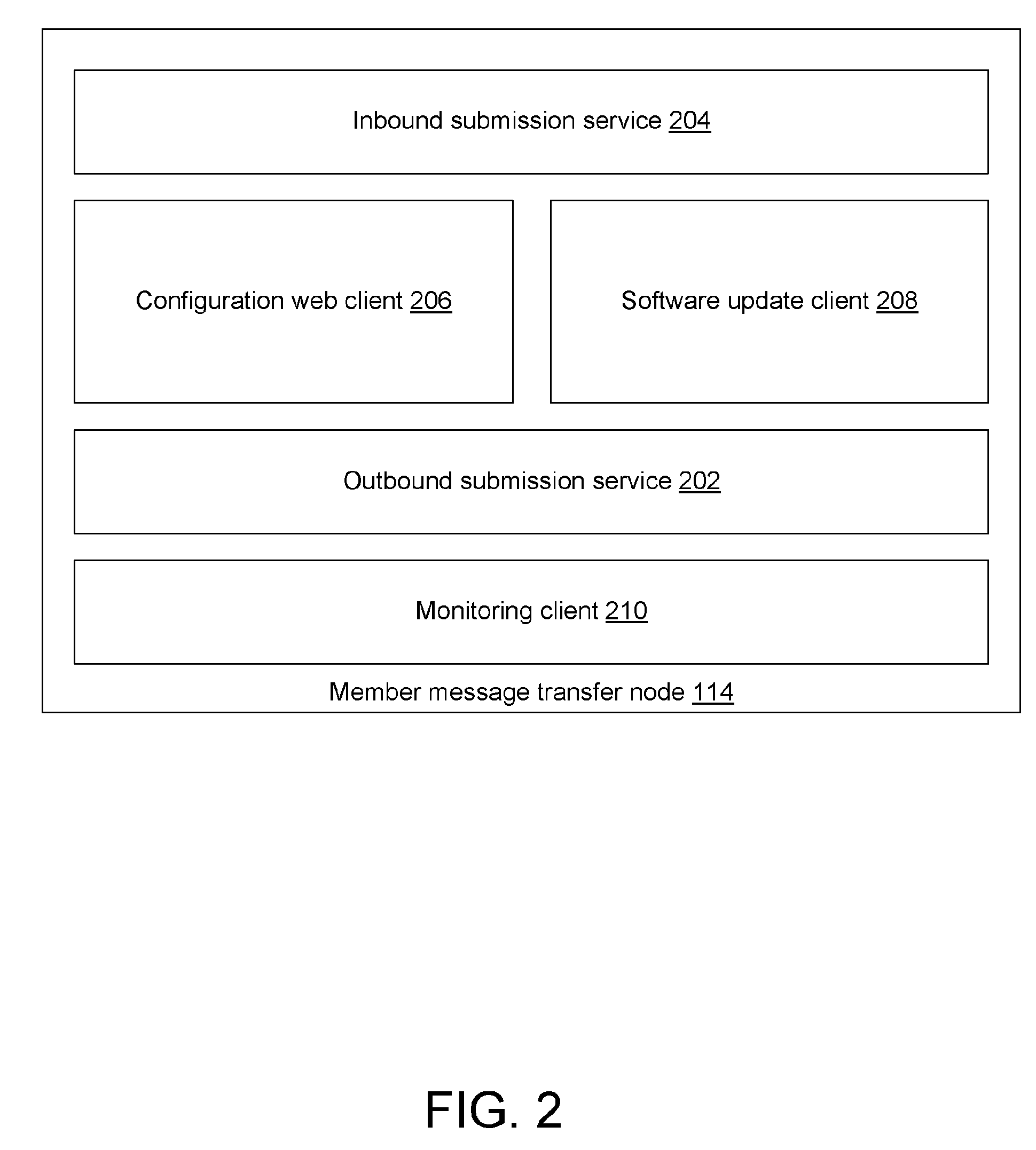Trusted Communication Network
a communication network and trust technology, applied in the field of trust communication networks, can solve the problems of inability to determine the authenticity or the identity of the sender of email messages, the cost of content filtering of inbound email and other internet communication, and the inability to protect the network from network pollutants
- Summary
- Abstract
- Description
- Claims
- Application Information
AI Technical Summary
Benefits of technology
Problems solved by technology
Method used
Image
Examples
Embodiment Construction
[0046] Systems and methods are described below that overcome problems and shortcomings associated with conventional inbound message filtering, by proactively filtering outbound message traffic in a private network. In addition to outbound message filtering, the private network can provide other outbound message services to one or more member nodes and networks that are registered with the private network. Messages emanating from the members are submitted through a private network processing hub, where various processes are carried out with respect to the messages to preserve the integrity of the network and enhance members' trustworthiness as perceived by nonmembers. Among other processing, the messages may be filtered by the processing hub according to filtering attributes, and / or quarantined when a threat is detected. If quarantined, a message may be disposed of according to a delivery disposition policy. As such, the private network reduces or eliminates threats from messages ema...
PUM
 Login to View More
Login to View More Abstract
Description
Claims
Application Information
 Login to View More
Login to View More - R&D
- Intellectual Property
- Life Sciences
- Materials
- Tech Scout
- Unparalleled Data Quality
- Higher Quality Content
- 60% Fewer Hallucinations
Browse by: Latest US Patents, China's latest patents, Technical Efficacy Thesaurus, Application Domain, Technology Topic, Popular Technical Reports.
© 2025 PatSnap. All rights reserved.Legal|Privacy policy|Modern Slavery Act Transparency Statement|Sitemap|About US| Contact US: help@patsnap.com



